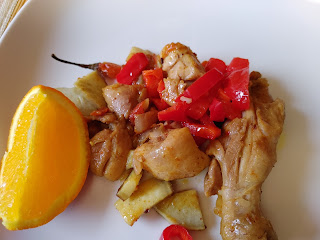Plastic Bags And Buying Vegetables
Using supermarket plastic bags for fruit and vegetables is partly responsible for the proliferation of plastic bags in oceans, rivers, flowerbeds, public parks, railway tracks and highways. It is possible to reduce the number of rogue plastic bags polluting the environment by simply not using them at source: where we do grocery shopping.
I mentioned the importance of recycling at source in a
previous blog, The Recycling Bible 8
March 2018. It will be hard
initially because it needs a certain mindset like driving. Safety is the key so we don’t engage in
stupid behaviour like texting and driving, which could kill someone.
We are mindful of traffic lights turning amber, pedestrian
crossings, roads full of herds of cattle or elephants out for a stroll, roads
near junior schools etc.
Not putting fruit and vegetables in a plastic bag is easier
if it’s a few oranges, but a challenge if they are eight because the cashier’s
scale is a little square that was designed to weigh them in a plastic bag. A cashier was surprised when I put a few on
her scale yesterday. NO PLASTIC I told
her.
Supermarkets can adjust.
They have. That is why they ask
you if you need a plastic bag for five cents.
It means they are aware of environmental implications of their
business. There is a lot of plastic
outside our reach, but ordinary grocery shoppers can do their bit, by recycling
at source. You don’t have to put the
following in plastic bags, lettuce for example.
It is already wrapped in some plastic foil so, you don’t need a plastic
bag for it.
1.
Whole pumpkin or pumpkin slices
2.
Onions
3.
Tomatoes
4.
Potatoes
5.
Bell peppers
6.
Carrots
7.
Oranges
8.
Bananas
9.
Pomegranates
10.
Kiwi fruit
You can think of many examples. Getting rid of plastic is a noble idea by Greenpeace, Save The Arctic and many earth groups, but
difficult to implement because it is about packaging, food in plastic
containers so that it could shipped to another city, province or continent.
By: Nonqaba waka Msimang.




Comments